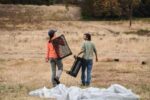Collo measures the quality of liquid processes in real-time
Collo’s new online measuring technology can detect nearly any change in liquid properties straight from the process in real-time. The novel technology has the potential to revolutionise liquid quality control, since it enables continuous process monitoring and is universally suitable for all fluids, from thin to thick. The technology is based on RF signals that can penetrate any liquid, machine learning, and sophisticated edge computing analysis. It is a simple-to-use solution that adapts to any liquid process automatically and results in an eight-dimensional multiparameter, real-time analysis that makes it possible to adjust the process immediately when there is a quality issue. Collo’s liquid fingerprint technology gives the manufacturing industry an opportunity to ensure that a liquid process behaves consistently from batch to batch. As an example, it can monitor fermentation processes widely used in food, cosmetics, and pharmaceutical industries and many other bioprocesses, to ensure that the delicate microbiological process is progressing as intended. The number of scrapped end-products can be minimised if the quality deviations are detected early in the process. Why invest in a new factory if it is possible to radically enhance the production at the current factory just by improving the way the process quality is measured? That is one of the reasons why Collo is currently building industrial partnerships worldwide, from Asia to Europe and the USA. Since Collo can adapt to almost any fluid, it means that the manufacturing industry can focus its quality assurance on real problems in real-time, instead of relying on blind samples that only provide retroactive snapshots of the process. Protecting ecosystems Fast response to liquid quality changes can be critical in other applications as well. Collo recently conducted a study to find out how unsupervised machine learning could be used to detect abnormal qualities in sewage waste. The study […]










